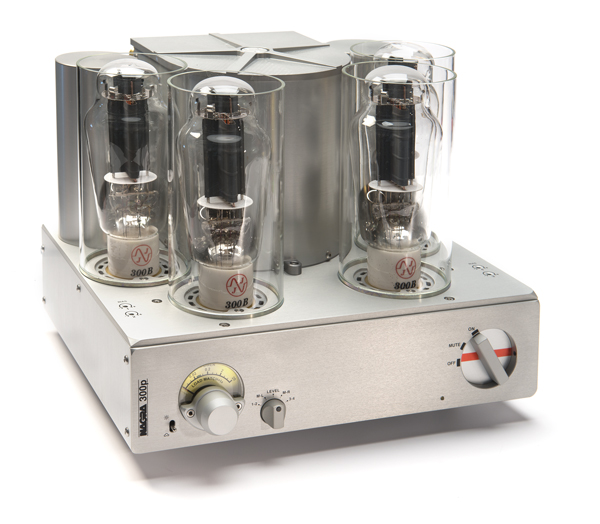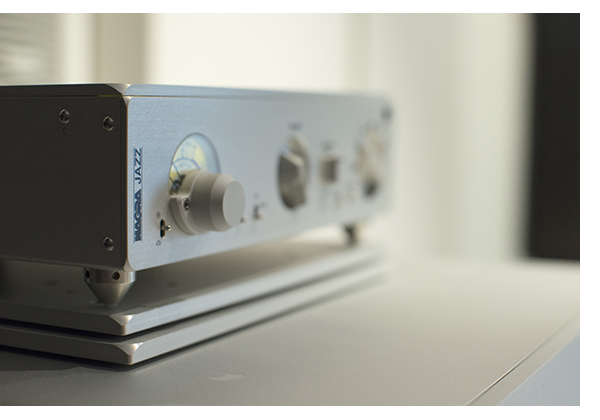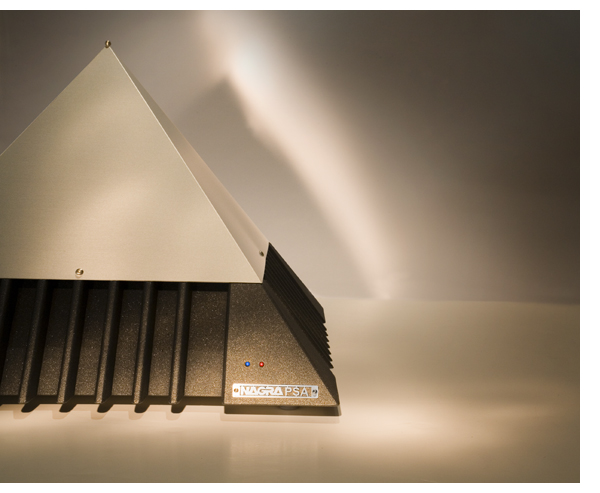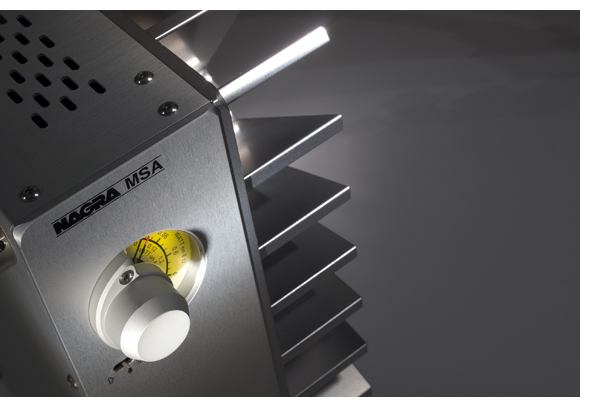 A visit to Nagra is a very special thing indeed. The factory is cleaner than a hospital, with highly organized workstations populated by happy and highly skilled workers calmly assembling some of the world’s finest audio gear. There’s almost a reverence about the place, and with the Montreux Jazz Festival nearby, there’s always plenty of access to fantastic live performances as an absolute reference.
A visit to Nagra is a very special thing indeed. The factory is cleaner than a hospital, with highly organized workstations populated by happy and highly skilled workers calmly assembling some of the world’s finest audio gear. There’s almost a reverence about the place, and with the Montreux Jazz Festival nearby, there’s always plenty of access to fantastic live performances as an absolute reference.
On my last visit a few years ago, Nagra had something special in progress. The company’s engineers were just finishing the final prototype of a new vacuum-tube power amplifier—a push-pull design featuring a pair of 300B output tubes and producing 20 watts per channel.
“With the wideband output transformers designed for the 300p, [the amp] has incredible control for a 300B design,” explains Nagra’s Matthieu Latour. “And it will surprise you with the wide range of speakers it will drive.”
Surprise Indeed
Magic is more like it. Toward the end of the title track of Pat Metheny’s Offramp, as Naná Vasconcelos’ gentle, twinkly percussion bits intertwine with Dan Gottlieb’s delicate brush work, it’s clear that this amplifier is able to capture the essence of what fans of the 300B SET sound clamor for, while exhibiting plenty of substance and control. From the top to the bottom of the frequency spectrum, especially the lower end, it’s instantly obvious that this amplifier has none of the shortcomings that plague even the best SET designs.
Steve Rodby’s signature acoustic bass has major weight and texture through this amp; you can almost feel his hand run up the fretless neck as the notes glide out into the soundstage. This is even more spectacular when you consider that the 300p is not driving a high-efficiency set of horn or single-driver speakers, but my reference KEF Blades. Though fairly efficient, with a 90-dB-per-watt sensitivity rating, the Blades require an amplifier with current reserve and low-end grip—something the 300p provides with ease.
Massive Attack’s “Karmacoma,” with its deep, slippery beats, underlines how well the 300p can take control of the Blade duos eight total woofers, moving some serious air without the presentation becoming weak or smeared. An equally enjoyable performance is rendered with selected tracks from Deadmau5, Skrillex and Tosca. This compact amplifier delivers potent bass response.
Beyond Bass
Ellen Reid, the female vocalist behind the Crash Test Dummies, produced a solo album in 2001 called Cinderellen. Reid stretches out a bit further as a lead vocalist here and most of the tracks are grittier than typical CTD fare. On “Defense of the Wicked Queen,” the 300p achieves a perfect balance between her complex voice and the accompanying piano. The 300p is a master of pace and timing, allowing the Blades to disappear effortlessly into room.
Much of this is the result of the attention to detail that Nagra paid when producing the amp’s output transformers, which are wound in house at Nagra. The rest comes from the prodigious power supply that is the foundation for the 300p, which has a nearly 11-by-11-inch footprint and weighs 31 pounds. Fortunately, Nagra ships it with the output transformer modules packed separately to avoid damaging the amplifier during shipping. As is the case with every other Nagra product we’ve had the pleasure to own or review, no detail, no matter how small, goes unnoticed.
At $16,900, the Nagra 300p is not inexpensive. Those thinking in terms of watts per dollar are missing the gestalt of this masterpiece. In the context of products from, say, Shindo or Audio Note, the Nagra is an absolute bargain—and is produced by a company with 60 years of experience and a comprehensive support staff, ensuring your Nagra products will always be in top shape.
As Ella Fitzgerald coos “April in Paris,” the luscious midrange depth of the 300p rivets your attention to the musical performance, and when Louis Armstrong joins her on the latter half of the track, awash in texture and tonal richness, it’s so easy to forget about the gear completely and just dig this classic tune. And that is the essence of the 300p: It always gets out of the way and celebrates the music.
As mentioned earlier, the 10.9-by-10.8-inch chassis has the same form factor as many of the other Nagra components, such as the PL-L preamplifier, PL-P phonostage and the new Jazz preamplifier, which we are now reviewing. It’s a basic, classic look that never goes out of style and pays homage to the famous Nagra field recorders of years past. I’ll stick my neck out and postulate that you will either gravitate to the Nagra design ethos or you won’t. If you fall into the latter camp, preferring massive boxes with enormous rack handles, the 300p is not for you.
Those of you who do appreciate the compact elegance and performance that is Nagra will revel in the sound of this petite music machine, and I suspect that you’ll do so for some time. This is not an amplifier to purchase casually, only to sell on Audiogon three months later. Like a fine watch or a Leica camera, the Nagra 300p is a treasure—something to be handed down to the next generation. Viewed in the light of permanence, the purchase price becomes somewhat irrelevant.
The front panel of the 300p features a slightly modified version of Nagra’s famous modulometer, which displays power output, allows biasing of the output tubes and assists with setting the load factor to optimize the amplifier for the speaker load being driven. All of this is quite handy and helps the owner get the most performance from the amplifier. The rear panel is equally Spartan, with user-selectable RCA or XLR inputs and output taps, suitable for driving 4-, 8-, or 16-ohm speakers.
Particularly interesting is the hybrid design of the 300p, with its solid-state input stage and power supply that work harmoniously, offering a wide bandwidth and incredibly low noise. Past pure-tube 300B designs we’ve auditioned have been on the noisy side compared to a push-pull EL34 amplifier, but the 300p is nearly dead silent when I press my ear up against the tweeter of the Blades—highly impressive.
Stepping up to the Focal Maestro Utopia speakers that have just arrived for review, with their 93-dB sensitivity rating, makes the 300p seem almost supercharged, with twice as much headroom on tap. But the amp really comes into its own with the 100-dB ZU Audio Soul Superfly speakers, which are able to coax near-stadium-level volume and dynamics out of the 300p’s 20 watts per channel. The ZU’s 16-ohm impedance provides a benign load, transferring power easily from amplifier to speaker.
Surprisingly, the 300p can still drive the 85-dB Harbeth Compact 7s to a very reasonable level without breakup in a small to medium sized room. The Nagra now seems worlds apart from my 9-watt-per-channel Wavac amplifier.
In the end, it’s about tonal purity and richness. Just like the small dog with a big heart that acts like it’s a Labrador, the Nagra 300p feels like a big amplifier until it is pushed to its absolute limit, which will ultimately be determined by your room and speakers.
I’m able to fool more than one guest into thinking that my 300-watt-per-channel Pass Xs 300 monoblocks are playing, when in fact the Nagra amplifier is what’s behind the music. The inner detail that this amplifier is able to reveal continues to impress, even after a couple of months of listening. Acoustic guitars have much more heft and resonance, with quicker attack and longer, more gradated decay.
Tube rollers will find intrigue with the 300p; however, the hand-matched JJs that are supplied provide an excellent balance of tonal purity, dynamics and extension at the frequency extremes. Should you have a few extra thousand dollars lying around and feel inclined, a recent vintage set of Western Electric 300Bs or EAT 300Bs, though expensive and tough to find, will take the 300p even further, providing even more inner detail.
Those wanting to simplify even further can purchase this amplifier as an integrated—called the 300i—for $21,250, eliminating the need for a linestage. Both units come supplied with Nagra’s VFS (Vibration Free System) platform to minimize interaction with the room environment. As with all other Nagra components we’ve used, the VFS is highly worthwhile, offering slightly quieter backgrounds and a more open soundstage, allowing you to peek even further into the musical picture. Perhaps it’s the large filament structure on the 300B tubes, but the VFS seems to make a greater improvement on Nagra preamplifiers than it does on others, so make sure and use it with your 300i/300p.
Regardless of which power tubes you settle on, if you have a pair of speakers with the necessary sensitivity for the Nagra 300p to offer enough dynamic range, this can certainly be your destination amplifier—and become the heirloom that the Nagra engineers intended.
Nagra 300p amplifier
MSRP: $16,900 ($21,250 for the 300i integrated version)
Peripherals
| Analog Source | AVID Acutus REF SP turntable TriPlanar tonearm Lyra Atlas cartridge |
| Phonostage | Indigo Qualia |
| Digital source | dCS Vivaldi stack |
| Preamplifiers | Nagra Jazz Audio Research REF 5SP Robert Koda K-10 |
| Speakers | KEF Blade Focal Maestro Utopia Zu Soul Superfly |
| Cable | Cardas Clear |
| Power | IsoTek Super Titan |























